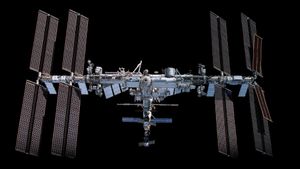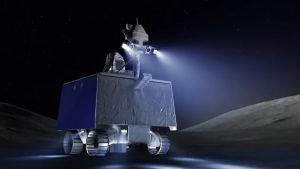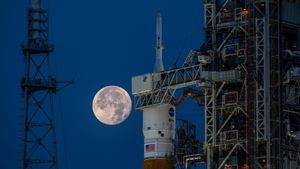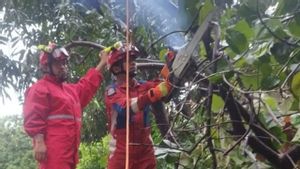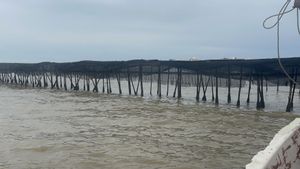JAKARTA - NASA has announced 13 candidate regions on the Moon that are potential landing targets for the first women and people of color from the Artemis III mission in 2025. This mission will be America's first mission to the lunar surface in 50 years. This mission will also be the first time humans will land on the dark side of the Moon, the South Pole.
The area names are Faustini Rim A, Peak Near Shackleton, Connecting Ridge 1, Connecting Ridge 2, Extension de Gerlache Rim 1, de Gerlache Rim 2 , de Gerlache-Kocher Massif, Haworth, Malapert Massif, Leibnitz Beta Plateau, Nobile Rim 1, Nobile Rim 2, and Amundsen Rim
This region was chosen because it provided continuous access to sunlight throughout the week-long mission, while also featuring a wide variety of landscapes from massive mountain peaks to the rim of large craters.
Not only is NASA's return to the moon epic, Artemis III is considered the first phase of the first human landing on Mars, as once completed, NASA will move forward with plans for its orbital outpost, the Lunar Gateway.
The massive craft will be home to four astronauts who will test technologies, such as rovers and reusable habitats, that will be used by those brave enough to set foot on the Red Planet.
SEE ALSO:
All of this, according to NASA, is important for them to develop the space economy which is key for the US to maintain its leadership in space.
"I feel like we're on a roller coaster going over the top of the biggest hill." Buckle up everyone, we're going to the moon here," said Jake Bleacher, chief exploration scientist, as quoted by the Daily Mail.
During the Friday, August 19 announcement, the Artemis team said they had spent the next three years analyzing each site to determine which locations would be explored by astronauts who would also collect samples to bring back to Earth after a 6.5-day mission.
"Some of the proposed sites within the region lie among some of the oldest parts of the moon, and, together with the permanently shadowed areas, provide an opportunity to learn about lunar history through previously unstudied lunar material," said Sarah Noble, lead author of the study. Artemis lunar science for NASA's Division of Planetary Science.
The analysis team has considered other landing criteria with science goals to make Artemis III specific, including the goal to land close enough to permanently shadowed territory to allow the crew to moonwalk, while limiting distractions during landing.
This will allow the crew to collect samples and conduct scientific analysis of the area without compromise, yielding important information about the depth, distribution and composition of confirmed water ice at the Moon's South Pole.
NASA announced the Artemis program in 2017, marking the 53rd anniversary of the Apollo 11 landings, and originally set 2024 for their return there.
However, the mission was delayed. Causes range from the coronavirus to a lack of funding to Jeff Bezos' Blue Origin suing NASA for choosing SpaceX to build the lunar lander.
Last Friday's announcement was the first time the world had heard of a moon landing site for the first women and people of color, so the much-anticipated mission looks set to move forward and will kick off with SpaceX's Human Space Landing System (HLS) first.
Once the data gives NASA the green light, they will send astronauts aboard the Orion capsule to dock with HLS. The two crew members will then be transferred to the Starship and head to their landing target.
Artemis III is still years away from being completed, but the first phase of the program, Artemis I, will begin on August 29.
This mission, Artemis I, will launch the first of the 22-foot Super Launch System (SLS), with the unmanned Orion capsule orbiting the moon and returning to Earth.
We are going.
As @NASA prepares to send astronauts to the Moon under #Artemis, we have identified 13 candidate landing regions near the lunar South Pole.
Learn about the landing regions and what sets them apart: https://t.co/XagoqjMi9b pic.twitter.com/lUwJun9yh0
— NASA Artemis (@NASAArtemis) August 19, 2022
The SLS lunar rocket is 41 feet shorter than the Saturn V rocket used during Apollo half a century ago. But it's more powerful, using a core stage and twin strap-on amplifiers, similar to those used for the shuttle.
The center stage is bright orange surrounded by two white rocket boosters on each side – and one booster features the NASA worm logo.
The Orion capsule is at the top, just below the Launch Abort System which is recognized by its pointed tip. The complete structure weighs 5.75 million pounds and is taller than the Statue of Liberty.
The Orion spacecraft will travel to orbit 40.000 miles beyond the moon, or 280,000 miles from Earth.
This mission will demonstrate the performance of integrated systems from SLS, Orion, and Exploration Ground Systems prior to manned flight.
According to NASA, this spacecraft, built by Lockheed Martin, will stay in space 'longer than any astronaut ship would without docking to the space station and returning home faster and hotter than ever before.
The English, Chinese, Japanese, Arabic, and French versions are automatically generated by the AI. So there may still be inaccuracies in translating, please always see Indonesian as our main language. (system supported by DigitalSiber.id)



